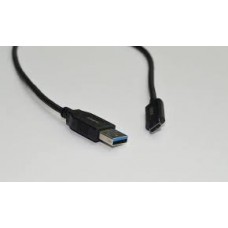USB Cable Type C
Physically, the Type-C port and connector is about the same size as that of the Micro-B USB mentioned above. A Type-C port measure just 8.4mm by 2.6mm. This means it's small enough to work for even the smallest peripheral devices. With Type-C, a USB cable's both ends will be the same, allowing for reversible plug orientation. You also don't need to worry about plugging it in upside down.

A compatible Type-C USB cable from Aukey that has a Type-A end.Dong Ngo/CNET
Set to be widely available starting 2015, Type-C USB will support USB 3.1 with the top speed of 10Gbps and has much high power output of up to 20V(100W) and 5A. Considering most 15-inch notebook computers require just around 60W of power, this means in the future laptop computers can be charged the way tablets and smartphones are now, via their little USB port. In fact Apple's latest 12-inch Macbook is the first notebook that incorporates a Type-C USB as its power port.
Going forwards, USB-C will enable storage vendors to make bus-powered (no separate power adapter required) external hard drives of much larger capacity, since it provides enough power to run one or even multiple desktop hard drives.
Type-C USB also allows for bi-directional power, so apart from charging the peripheral device, when applicable, a peripheral device could also charge a host device. All this means you can do away with an array of proprietary power adapters and USB cables, and move to a single robust and tiny solution that works for all devices. Type-C USB will significantly cut down the a amount of wires currently needed to make devices work.
Enter the code in the box below:






